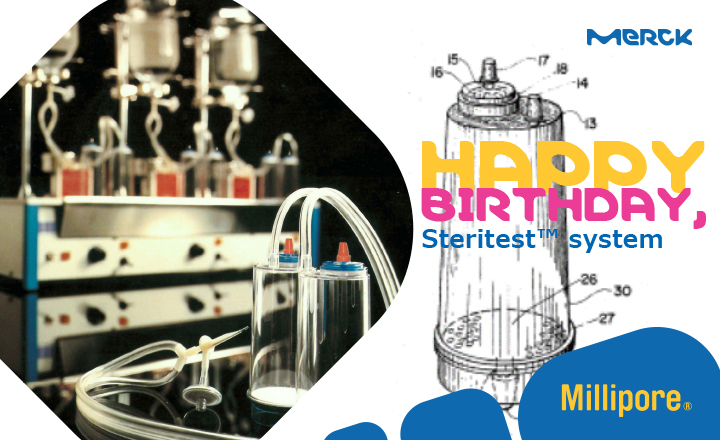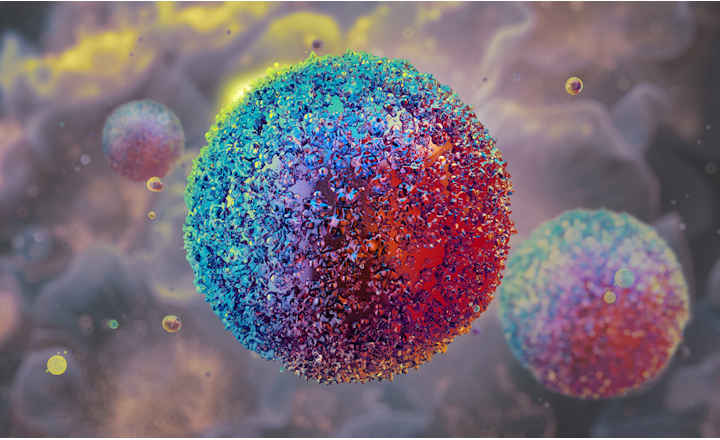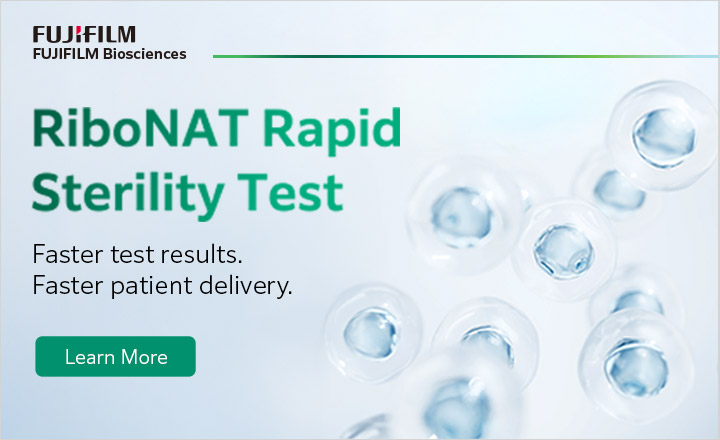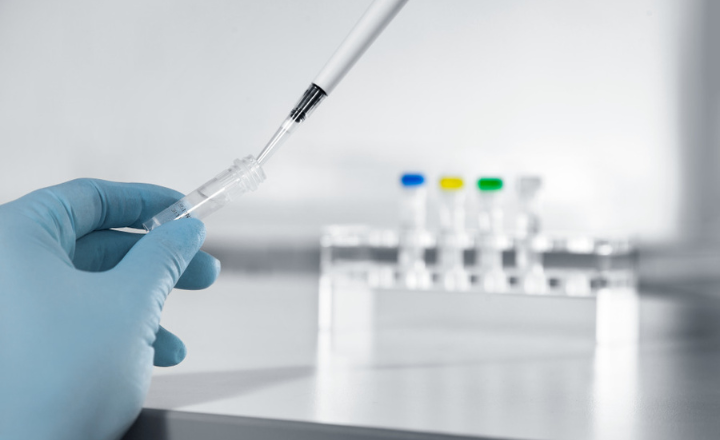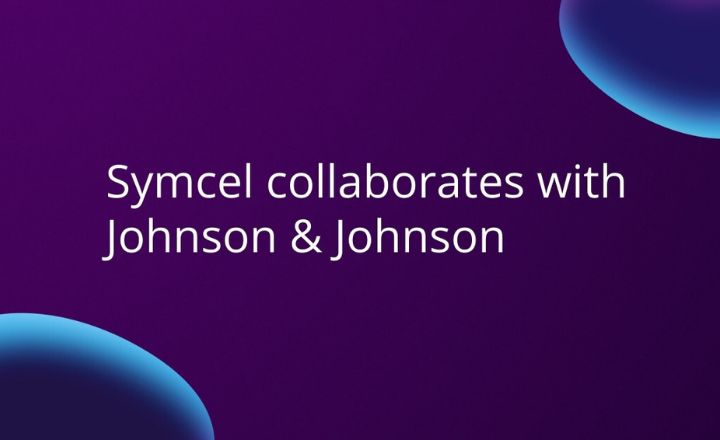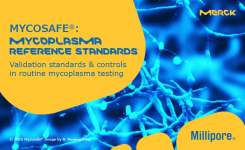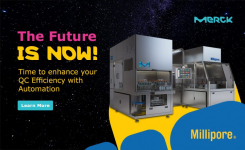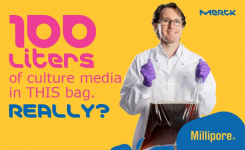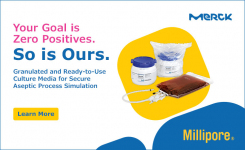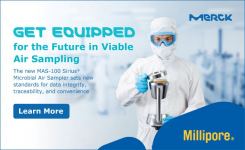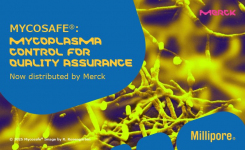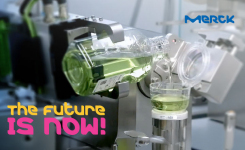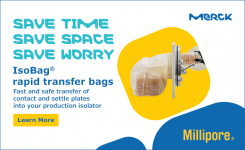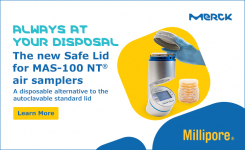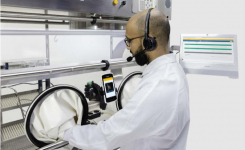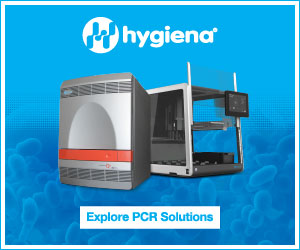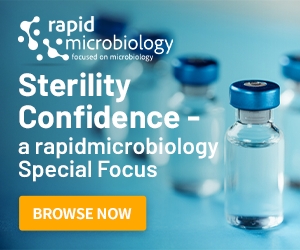Fernand Burghard, Millipore’s European Manufacturing Director until 2000, was part of the Steritest™ adventure from the beginning. In an interview, he tells us about how this breakthrough sterility testing system came into being.
When and why was there an idea to develop something like the Steritest™ system?
In the early 70s, large pharmaceutical companies were struggling with the sterility testing needed to release a pharmaceutical to the market. Sterility tests were performed openly under a laminar flow hood. Many false positives, often more than 30%, were observed, leading to additional tests and controls, discarded production lots, and manufacturing delays. The financial consequences were huge and drug access for patients impaired. Millipore found out about these sterility testing and end-user issues from customers in the United States.
- a 125 mL volume container
- a closed system
- a 47 mm membrane
- 2 canisters
- a needle and a Y-piece to connect tubing to the 2 canisters.
This was the start of the Steritest™ adventure!
Is the Steritest™ system the result of in-depth market research or of a gut feeling?
The Steritest™ system was developed to address a need clearly expressed by customers in the pharmaceutical industry, at a global level, to improve the reliability and robustness of the test for sterility.
How much time was required to develop the Steritest™ system and introduce it to the market?
More than 2 years were needed to develop a solution because there were several issues to deal with. The concept was unique and innovative, a revolution in the sterility testing world, which required hard work from a multidisciplinary, audaciously bold, and creative team.
What was the biggest challenge during development, and how did you solve it?
Equal splitting into the 2 canisters needed quite some effort. We had to work on the plastic tubing and eventually, we came to the conclusion that we had to replace the classical vacuum pump with a peristaltic one.
The marketable product resulted from a close collaboration with a local partner, specialized in industrial engineering, and the courage and conviction of a curiosity-driven and motivated team.
Which three words would best characterize the Steritest™ system?
Only one: extraordinary. Our pharma customers’ need was clear: they had a high level of false-positive test results, leading to significant drug quarantine costs and time wasted on follow-up tests. All this had to stop. We felt the mission to find a radical solution, a solution to this worldwide issue in the industry.
Did you imagine back in 1974 that the Steritest™ system would become the standard for sterility testing in the pharmaceutical industry, something they all use, like a Petri dish or a pipette?
We had high hopes, justified by the enormous market size. The issue was a global one, and we strongly believed in our solution.
45 years after market introduction, the Steritest™ system remains the reference for sterility testing. How do you feel about that?
I am personally very proud to have contributed to the creation of the Steritest™ system, a reliable solution that helps customers and patients all over the world.
Concluding remarks from Estelle Zelter, Global Product Manager Sterility Testing:
This year, the Steritest™ system celebrates its 45th anniversary as a commercial product. Curiosity and innovation still motivate the teams at Merck. Like Fernand Burghard and his colleagues did, we listen carefully to our customers in order to continuously improve our existing products while respecting regulatory requirements. At the same time, we look to the future, developing breakthrough technologies and innovative products. Over the 45 years, the Steritest™ system has been refined. There’s a fully compliant portfolio for sterility testing that includes membrane filtration devices, pumps and accessories, culture media and fluids, and related services. The many years of experience have yielded comprehensive method development & consultancy expertise, validation protocols (IQ/OQ/PQ & requalification), service plans and training (Sterility testing remote school, advanced operator training, …), of which we are today proud.
For more information on the Steritest™ system please use the green "Request Information" button below. We’re as willing as ever to help you solve your challenges. Or discover the latest features of our Steritest™ system.


